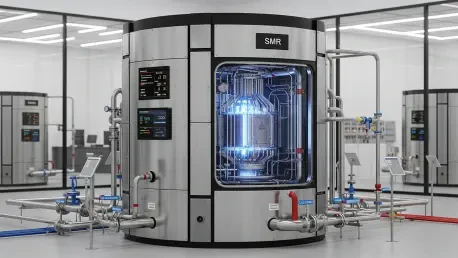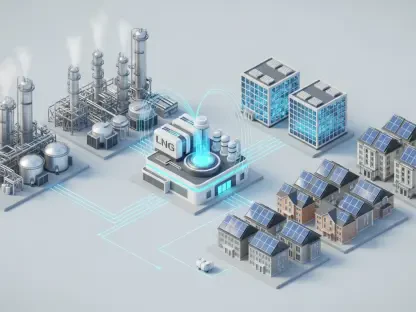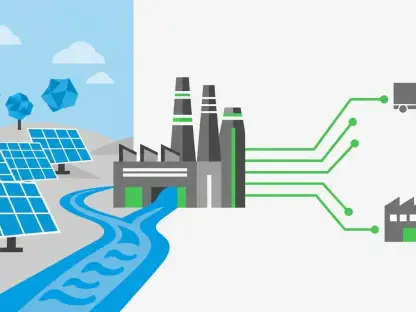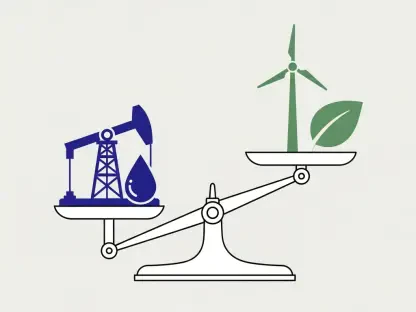I’m thrilled to sit down with Christopher Hailstone, a renowned expert in energy management and utilities, whose deep knowledge of renewable energy, electricity delivery, and grid reliability offers invaluable perspectives on the evolving energy landscape. Today, we’re diving into Sweden’s ambitious move to revitalize its nuclear power sector with small modular reactors (SMRs), a significant step after decades of dormancy. Our conversation explores the strategic partnerships behind this initiative, the role of nuclear power in meeting soaring energy demands, and how this fits into Sweden’s broader goals for energy security and sustainability. Join us as we unpack the challenges, timelines, and implications of this groundbreaking project.
Can you walk us through why Sweden’s Vattenfall chose Rolls-Royce SMR and GE Vernova as the frontrunners for their small modular reactor project?
Certainly, Silvia. Vattenfall’s decision to shortlist Rolls-Royce SMR and GE Vernova reflects a careful evaluation of technological innovation and proven expertise. Rolls-Royce brings a compact, scalable design with their SMRs, which are tailored for quicker deployment and can power around a million homes per unit for over 60 years. GE Vernova, with their BWRX-300 model, offers a robust, well-tested boiling water reactor technology that emphasizes safety and efficiency. Both companies align with Vattenfall’s need for reliable, long-term solutions to meet Sweden’s energy goals. While other firms were likely considered, these two stood out for their balance of innovation, cost-effectiveness, and readiness to meet stringent regulatory standards.
What makes the construction of new nuclear reactors at the Ringhals plant a landmark moment for Sweden after more than 40 years without such projects?
This is a pivotal moment for Sweden, marking a shift from a past focused on phasing out nuclear power to embracing it as a cornerstone of energy security. Building at Ringhals, with a planned output of 1,500 MW from either five GE Vernova reactors or three Rolls-Royce SMRs, signals a renewed trust in nuclear technology. It’s not just about power generation; it’s about stabilizing the grid as electricity demand is projected to double to 300 terawatt-hours in the next two decades. This project also ties directly into Sweden’s net zero emissions target by 2045, providing a low-carbon baseload to complement renewables like hydropower and wind.
How did Sweden’s perspective on nuclear power evolve from the 1980 decision to phase it out to now planning significant expansion?
The 1980 decision to phase out nuclear power was heavily influenced by public concern after global incidents like Chernobyl, fostering a deep skepticism about safety. However, over the years, several factors shifted the narrative. Rising energy demands, especially from emerging industries like green steel and hydrogen production, exposed the limitations of relying solely on renewables for baseload power. Additionally, advancements in nuclear technology, particularly with safer, smaller modular designs, helped rebuild confidence. Politically, there’s been a pragmatic turn, with leaders recognizing that achieving net zero by 2045 requires a diverse energy mix. Public opinion has gradually followed, especially as climate change concerns outweigh past fears.
What are the biggest challenges in meeting the government’s ambitious timeline of breaking ground on these reactors before the next election in September next year?
The timeline is incredibly tight for a project of this complexity. Nuclear developments typically face hurdles like rigorous safety assessments, environmental approvals, and public consultations, all of which can take years. While the government’s push for the first “spade in the ground” by next September shows political will, securing funding—potentially up to 600 billion crowns in state loans—and finalizing designs with Rolls-Royce or GE Vernova adds layers of uncertainty. Supply chain delays or local opposition could also slow things down. It’s doable, but it’ll require unprecedented coordination and streamlined processes.
With Sweden’s electricity demand expected to double over the next two decades, how does this nuclear project fit into the broader energy strategy?
The projected jump to 300 terawatt-hours is driven by industrial electrification, particularly in sectors like green steel, biofuels, and large-scale hydrogen production, all critical for decarbonization. Nuclear power, with this 1,500 MW capacity at Ringhals and potential for an additional 1,000 MW, offers a stable, carbon-free baseload that renewables alone can’t provide due to their intermittency. While hydropower and wind currently dominate Sweden’s near-fossil-free grid, nuclear will act as a backbone, ensuring reliability as demand spikes. It’s about creating a balanced mix where each source plays to its strengths.
What is your forecast for the role of nuclear power in Sweden’s energy future by 2045?
I’m optimistic that nuclear power will become a linchpin in Sweden’s energy portfolio by 2045, especially as the government targets the equivalent of 10 full-size reactors. With SMRs offering faster deployment and lower upfront costs compared to traditional plants, we could see nuclear contributing significantly beyond the current 30% of electricity production. However, its success hinges on overcoming public skepticism, securing long-term financing, and integrating with renewables without over-relying on any single source. If executed well, nuclear could be the key to both energy security and meeting net zero goals, setting a model for other nations to follow.









